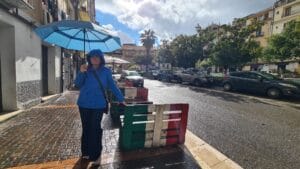
Lamezia Terme: The Blog That Nearly Didn’t Happen – By Andy
A2Z Wander | Our Blog A Rainy Arrival (and a Slight Hangover) Lamezia Terme almost didn’t get its own blog post. There’s only so many
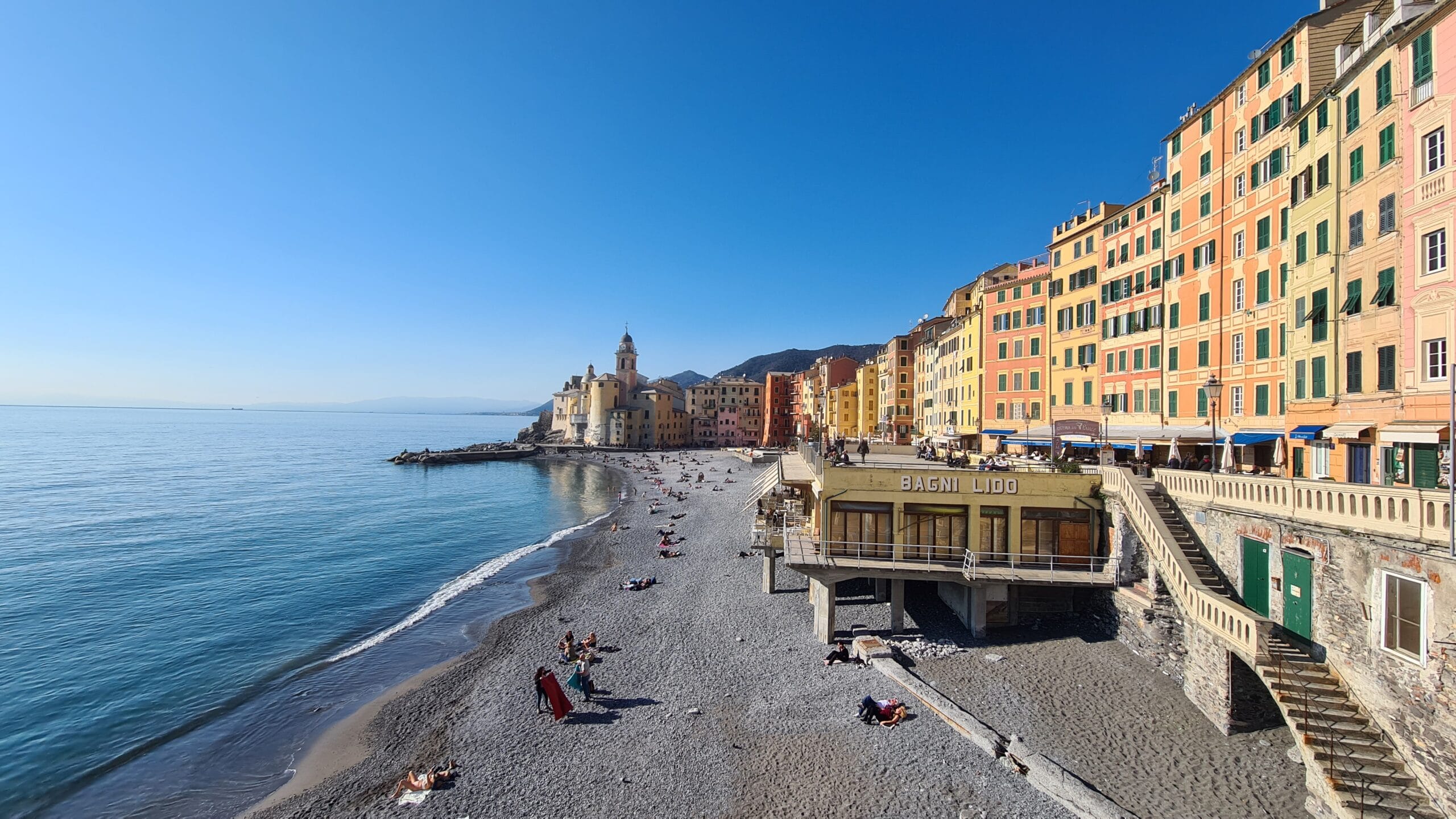
Andy started the day by washing his running gear in the sink and attempting some sort of makeshift drying system.
I was teaching for three hours in a space that could generously be described as ‘functional’: no adjustable-height chair, no eye-friendly lighting, and definitely no second screen.
Who knew washing machines and adjustable desks would be top of the list of things we missed?!
But, a morning of work needs an afternoon of reward.
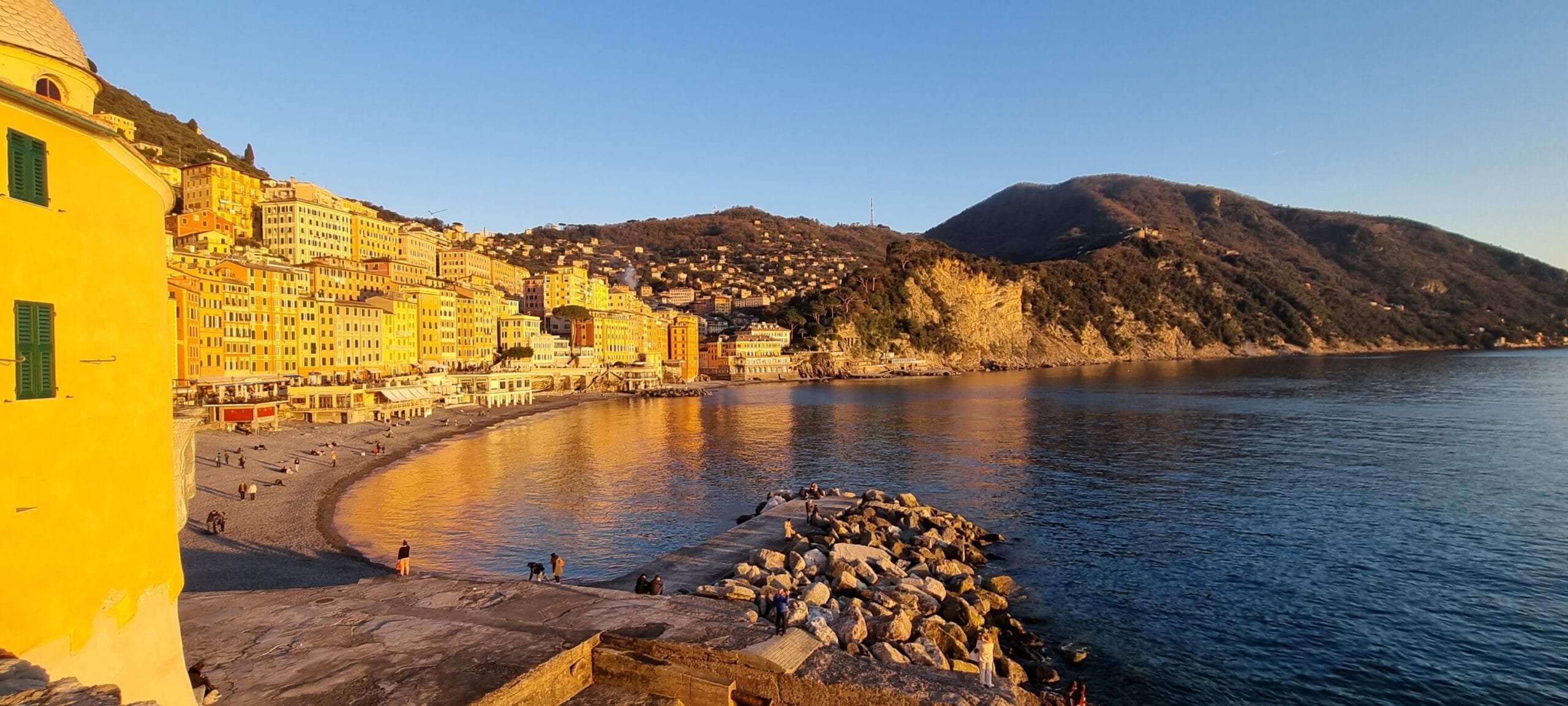
Camogli is a picture-perfect fishing village tucked away on the western side of the Portofino Peninsula. It frequently appears on lists of Italy’s prettiest villages, yet somehow, it has managed to retain its authentic, lived-in feel. In March, it still felt like a local town—bypassed by the day-tripping crowds that descend on its glamorous neighbour or the ever-popular Cinque Terre.
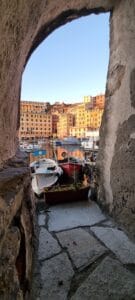 If the Ligurian coast were a family, Camogli would be the effortlessly chic but low-key relative. No designer boutiques, no superyachts, just a stunning stretch of coastline, wide beaches, and clifftop views that have drawn in Milanese and Turinese holidaymakers for generations.
If the Ligurian coast were a family, Camogli would be the effortlessly chic but low-key relative. No designer boutiques, no superyachts, just a stunning stretch of coastline, wide beaches, and clifftop views that have drawn in Milanese and Turinese holidaymakers for generations.
Getting here is surprisingly easy. Camogli-San Fruttuoso station drops you right in the centre, and within minutes—after navigating a steep set of steps—you’re on the waterfront. And what a waterfront it is. The seafront is lined with sun-washed palazzi in rich shades of amber, apricot, and terracotta. (Surely, Farrow & Ball must have an ‘Italian Riviera’ paint chart by now?)
Camogli’s beauty isn’t just skin-deep. Those colourful façades and trompe-l’oeil details aren’t just for show; they were once vital navigational aids, helping sailors find their way home.
Hard to imagine now, strolling along the promenade, but in 1856, Camogli earned the title of ‘The City of a Thousand White Sailing Ships.’ This small town was once a powerhouse of the merchant navy, boasting a fleet that rivalled Europe’s largest ports.
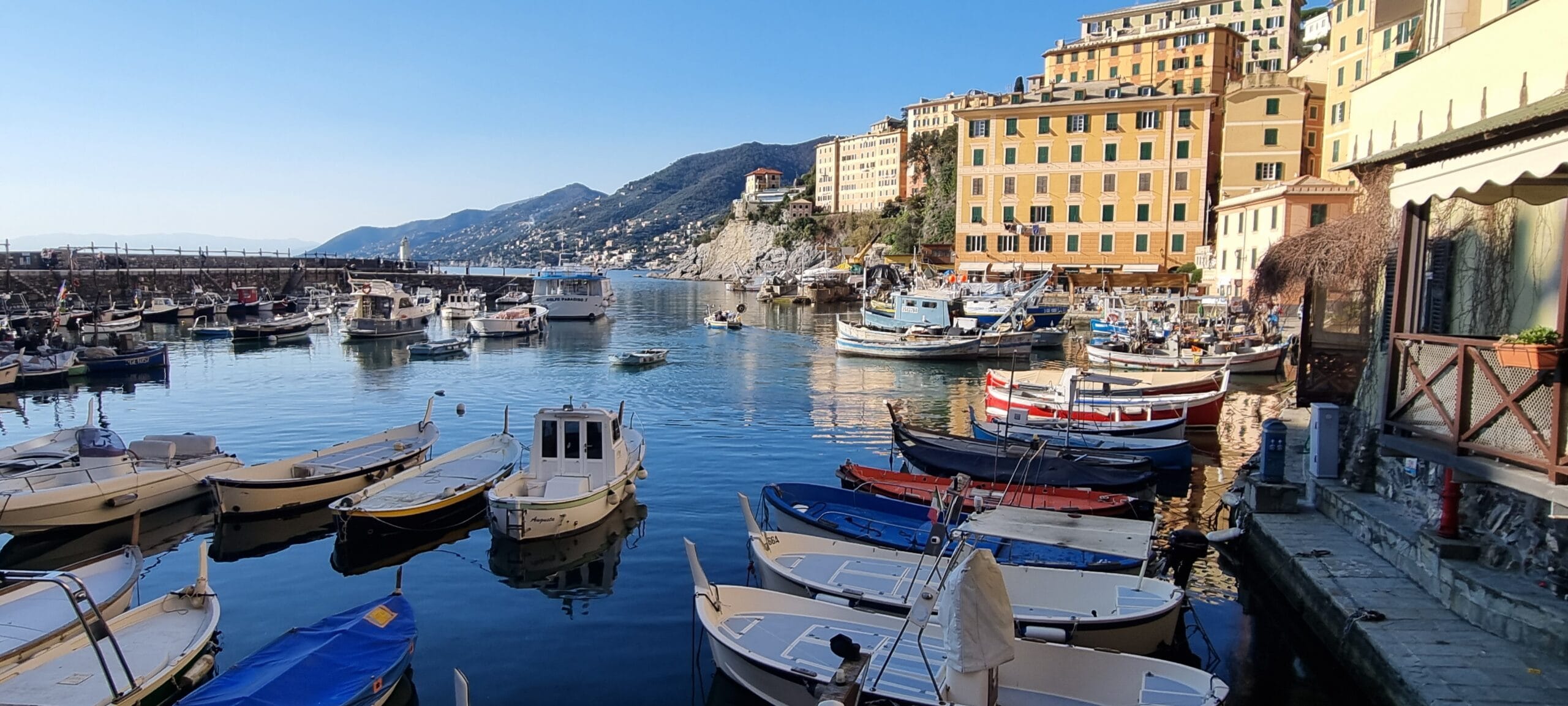
To put it in perspective, Hamburg—one of the continent’s most important maritime hubs at the time—had 560 ships. Camogli? Over 700.
This golden age of seafaring saw the construction of some of the town’s grandest buildings, including its historic theatre.
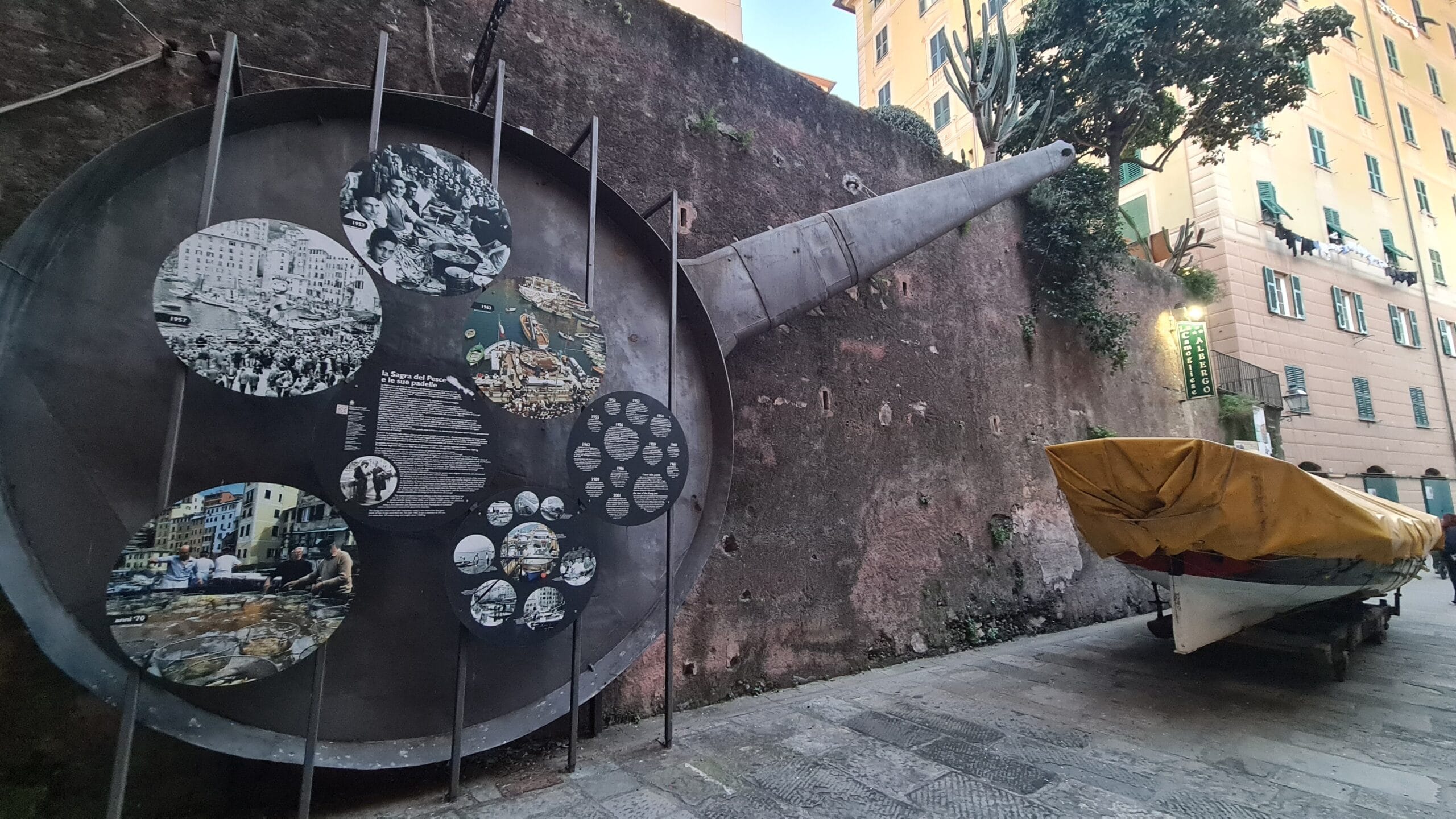
At the bottom of the steps down from the station is a giant frying pan. And when I say giant, it’s 395 cm in diameter, 10m long and weighs 1500 kg. Used at Camogli’s world famous fish festival, running since 1952, originally to promote tourism in the town and economic revival post-war, the fish festival grew to proportions the locals couldn’t have imagined. And so did the pan!
The festival began with six small frying pans, with high visitor numbers they were frying fish late into the night. The following year they doubled the number of frying pans, only for more visitors to turn up! Two fishermen had the idea to build a giant frying pan, and the festival became world famous.
On the two day celebration honouring San Fortunato, the patron saint and protector of fishermen along with San Prospero, religious ceremonies are interspersed with other rituals, old and new.
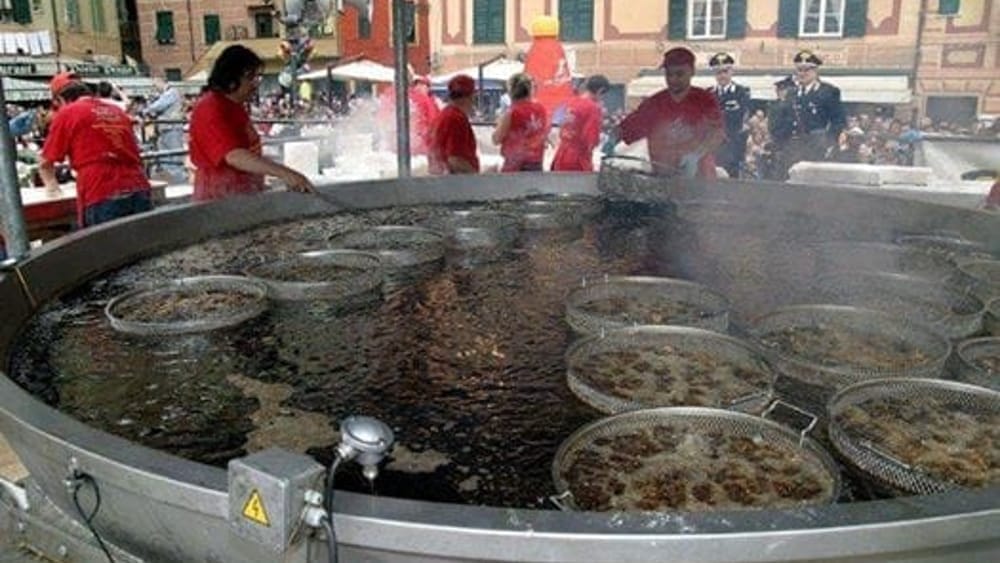
On Sunday, after the blessing of the frying pan, the fish frying begins. The fish are provided free of charge by the fishermen of Camogli. In recent years, this has amounted to 3 tons of fish being fried in over 1000 litres of oil to serve c.4000 portions of fried fish. There are 3 other giant frying pans also frying and serving hungry visitors.
If ever there was a reason to return to Camogli, witnessing this could be it!
 Bars and restaurants line the waterfront, offering sweeping sea views at prices that—given the location—are surprisingly reasonable. The menus are full of Ligurian classics, with a strong focus on seafood, and the relaxed atmosphere encourages lingering. No one here seems in a hurry.
Bars and restaurants line the waterfront, offering sweeping sea views at prices that—given the location—are surprisingly reasonable. The menus are full of Ligurian classics, with a strong focus on seafood, and the relaxed atmosphere encourages lingering. No one here seems in a hurry.
Usually, we’d be scouring the backstreets for a hidden gem, but the late afternoon sun had other plans. As it cast its golden glow over the town, glinting off the water in an irresistible display, we found ourselves drawn to Primula. A table outside, the lull of the waves, and a couple of plates of Ligurian specialities—trenette col pesto (pasta with pesto, green beans, and cubes of potato) and calamari with artichoke stems. The perfect accompaniment to some leisurely people-watching.
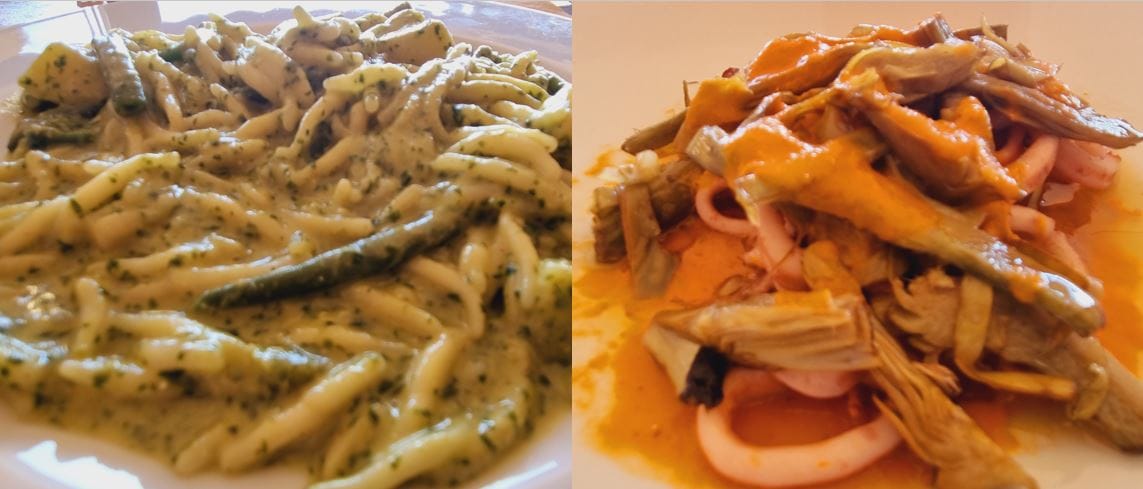
We couldn’t help but be amused by the contrast in attire. Families played on the beach, teenagers waded into the sea, while, just metres away, well-wrapped locals paraded along the promenade in full winter regalia—jackets zipped up, scarves wound tightly as if bracing against an Arctic gale rather than a mild March breeze.
Scarves in Italy are a serious business. Year-round, their fabric may change with the seasons, but their presence remains non-negotiable. Some wear them with undeniable style; others out of pure necessity. I’m reliably informed by a native friend that every Italian grows up knowing that a blast of air on the neck is the root of all illness.
The infamous ‘colpo d’aria’—literally, a hit of air—is no laughing matter. One careless gust can bring on ‘cervicale,’ a dreaded neck ache that, judging by the way it’s spoken about, might as well be the plague. Wet hair? A direct invitation to sickness. No undershirt in winter? A reckless gamble. Walking barefoot indoors? Unthinkable. Clothing choices in Italy are dictated by season, not temperature. Back home, the first hint of sunshine sees the British public donning shorts and flip-flops. Here? Not a chance.
Our idyllic moment of sun-drenched people-watching came to an abrupt—and deafening—end. Somewhere nearby, a bulk delivery of vuvuzelas had clearly just arrived, and within moments, it seemed that every child in town had been armed with one. The same vuvuzelas that were banned from the 2010 World Cup for concerns about hearing damage, noise pollution, and general public sanity.
Muttering unspeakable things about what we wished upon these instruments of chaos, we paid the bill and left. Even the seagulls looked startled, out-squawked by the relentless blast of plastic horns.
Escaping the cacophony, we wandered towards the pier, making our way to Camogli’s lighthouse and the harbour. As we rounded the bend we walked into the middle of an odd scene.
Lorries were wedged into the small space in front of the harbour, blocking the view. Equipment cables snaked across the stones, heavy metal trunks stood abandoned, and a scattered mix of people milled about, mostly looking like they had nowhere urgent to be.
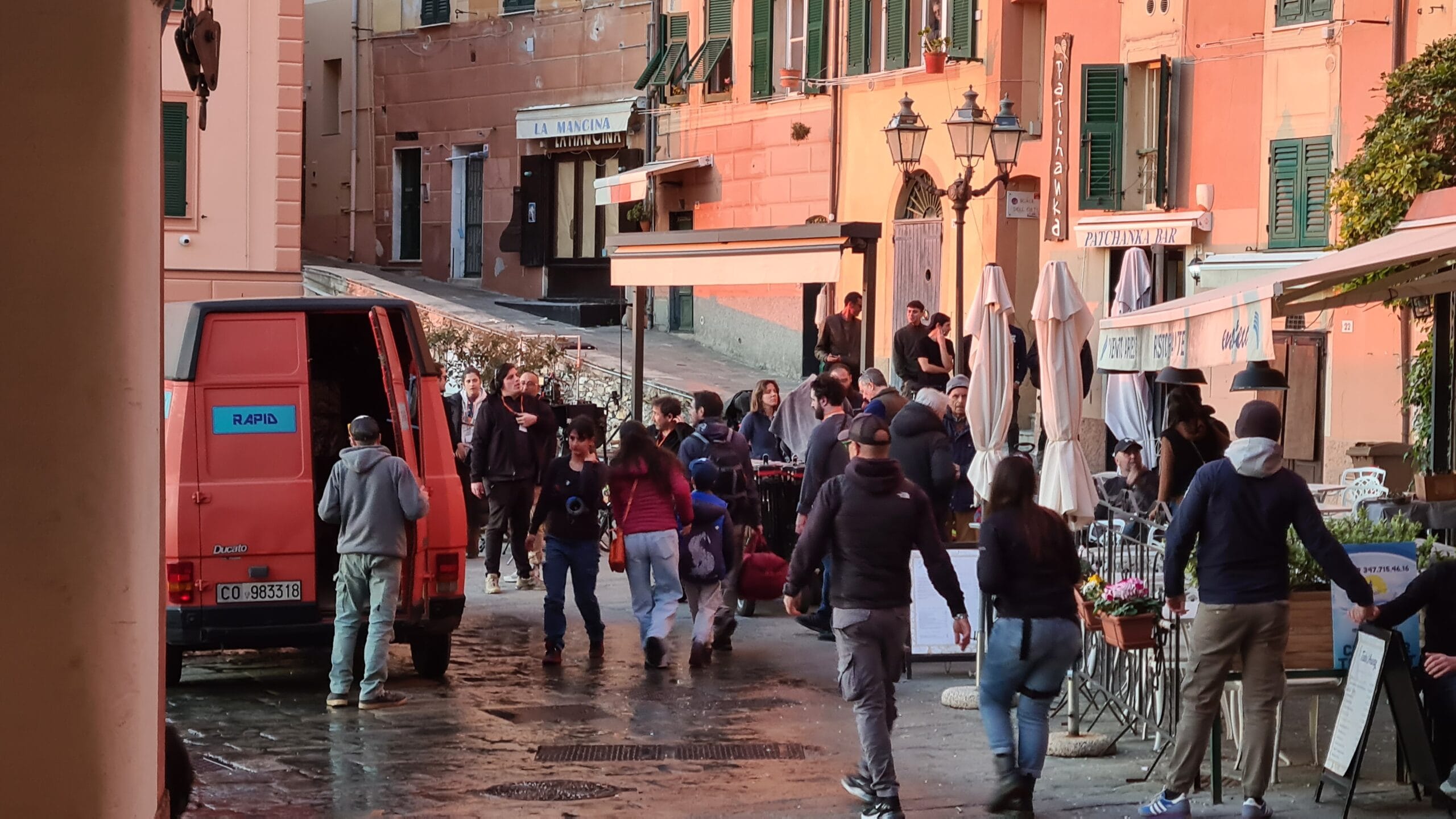
Then, a sudden commotion at the top of the stairs caught our attention. A group of nuns bustled into view—except, on closer inspection, they weren’t nuns at all. It took a moment to register: we’d stumbled onto a film set. A quick search on Google gave us nothing, but before we could investigate further, the whole crew erupted into action. They were on the move.
As we tried to stay out of the way (and avoid an unfortunate accident involving a rogue lighting rig), a ‘nun’ and another woman strolled past, trailed by an enthusiastic band of autograph hunters. A few of them managed to stop what was, presumably, someone famous—long enough for a flurry of selfie requests.
Andy, ever the opportunist, began to consider his big-screen potential. He fancied that his exotic good looks might earn him a role. I gently reminded him that sunburnt cheeks and a nose tinged pink from an hour in the Italian sun might not be quite the ‘Mediterranean’ aesthetic they were looking for.
With the film crew gone, peace returned, and we settled in to watch the sun sink over the harbour. The striking sculpture of two whale tails, sculpted in wire mesh, loomed over the harbour wall—a favourite perch for locals gathering to soak up the last golden rays.
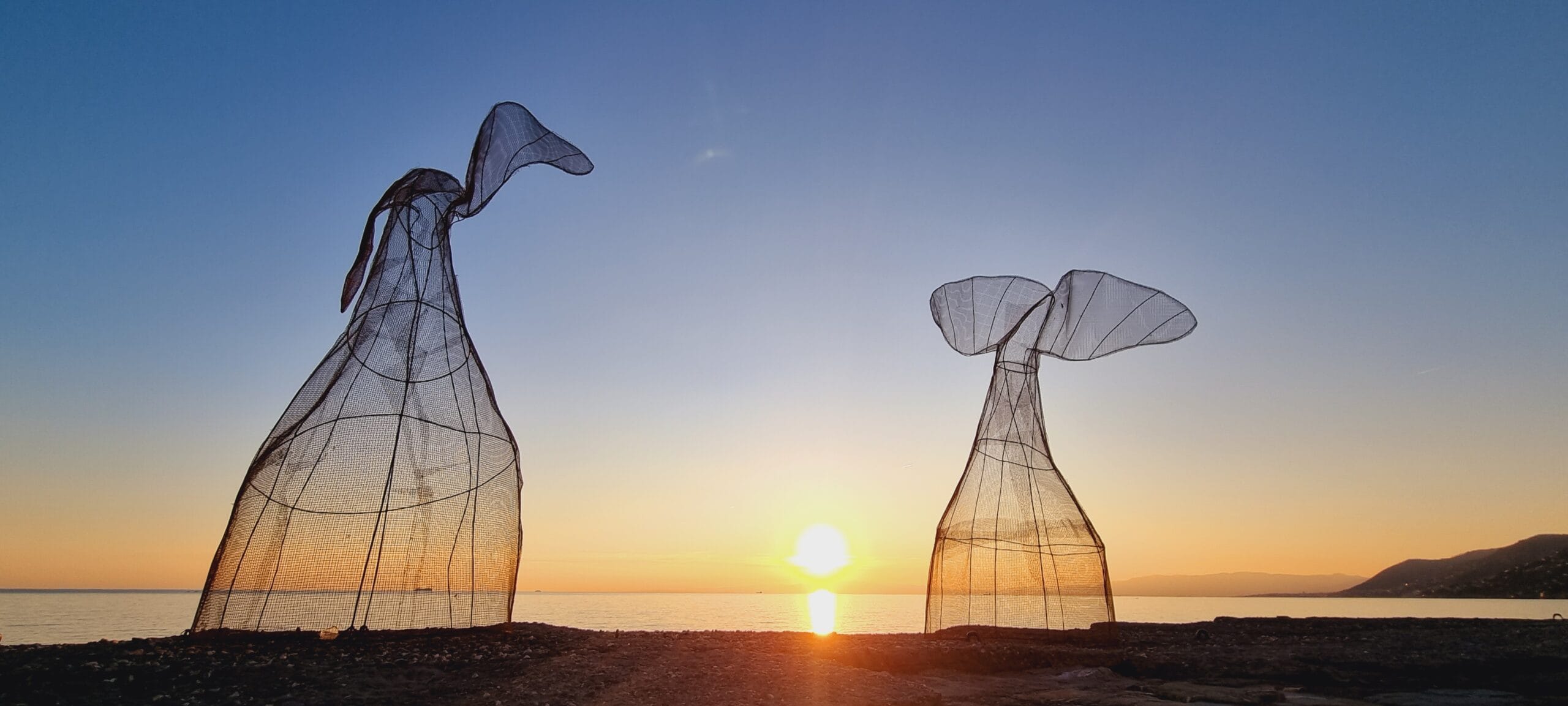
From here, the view stretched across the village and out over the Gulf of Genoa—one of those rare, stop-you-in-your-tracks panoramas. The kind that makes you pause, breathe deeply, and remember why you travel. To slow down. To soak it all in. To feel, just for a moment, completely in tune with a place.
And perhaps, just perhaps, to contemplate investing in a new scarf.
Follow us on instagram @a2z.wander

A2Z Wander | Our Blog A Rainy Arrival (and a Slight Hangover) Lamezia Terme almost didn’t get its own blog post. There’s only so many

A2Z Wander | Our Blog A short coastal train ride punctuated by dramatic thunderclaps brought us further down into Calabria to a town called Scilla.
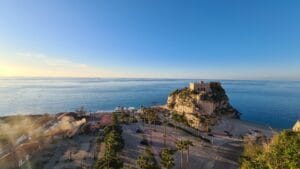
A2Z Wander | Our Blog This is quite the introduction to the town of Tropea… This is the view from Belvedere Piazza del Cannone in

A2Z Wander | Our Blog Three weeks into the trip, and we were finally swapping wheels for waves, boarding our first boat along the coast

A2Z Wander | Our Blog With Sorrento in our rear-view mirror and the sea glittering to our right, we eased into the Amalfi Coast Drive,

A2Z Wander | Our Blog Naples left its indelible mark on us. We were sad to be leaving with so much still unexplored. But, if